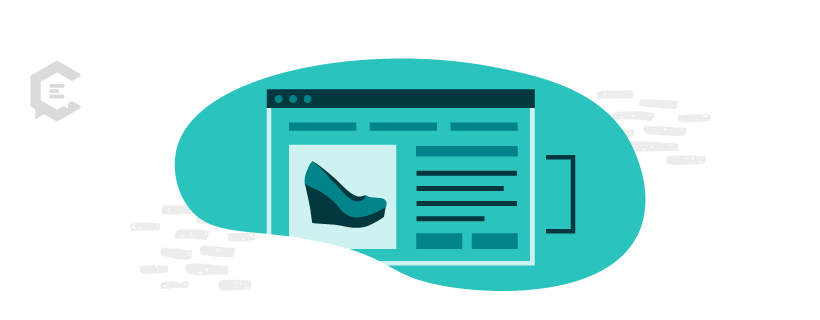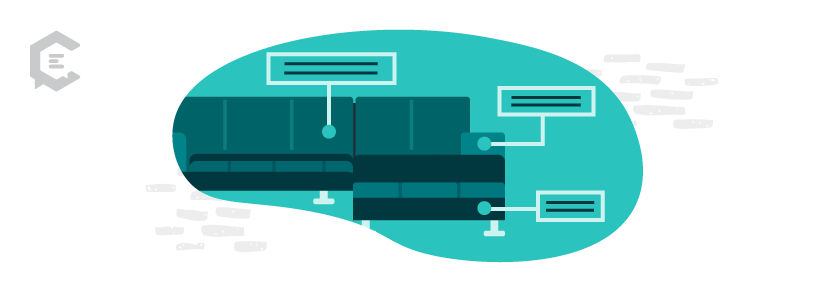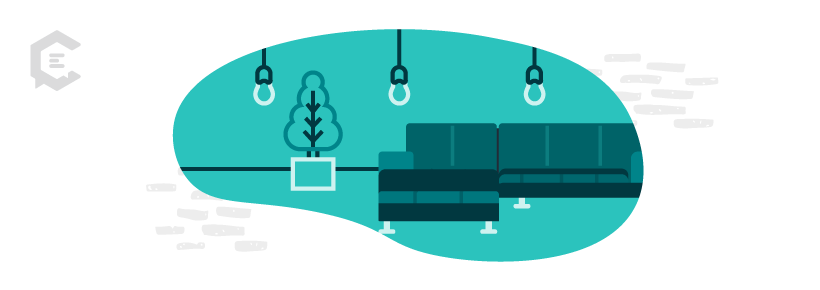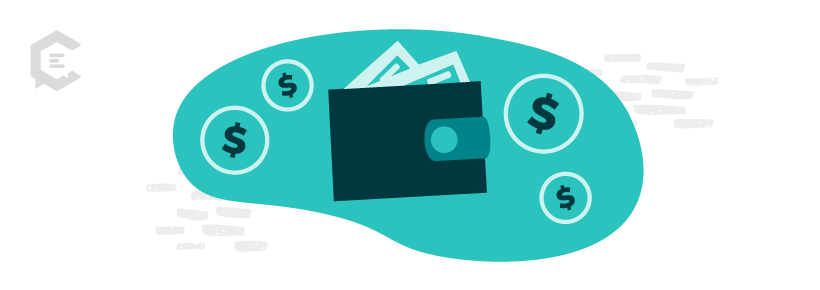In a crowded marketplace, sometimes all you have is spin. So use it — even for something as mundane as selling a used couch. Don’t underestimate the power of knowing how to write creative product descriptions. Up your game by crafting your sales pitch with ADEPT marketing principles and narrative lines.
No matter the size of the product you’re selling or the scope of your service, aligning content with your ideal customer and differentiating it from your competition can clear the most expedient path to a sale.
One way to do this with your production descriptions is through narrative lines, a technique you can use to sell just about anything. Some call it spin. We call it common sense.
In short, narrative lines are strings of information that lead the reader into an explicit story (one you clearly state) or an implicit story (one someone projects or infers themselves). They can be as simple as aligning similar thoughts into a logical order, or as complex as constructing components in a greater, overarching theme or narrative.
Weave Narrative Lines into Your Marketing Funnel
In content marketing, narrative lines often align with the three stages of the classic marketing funnel: awareness, consideration, and transaction. And although there might be more versions of the marketing funnel than there are actual marketers in the world, nearly all funnels include that simple 1-2-3 sequence, no matter how expanded or elaborate they may be. Each provides a guide to inform your narrative lines.
For selling a tangible product, you can break out the consideration stage into three additional parts: differentiation, experience, and particulars. This alternate ADEPT version of the funnel especially works for more emotional purchases (because they might tie in more to how someone expresses their identity or lifestyle), such as cars, homes, clothing, decor, furniture… the list goes on.
ADEPT version of the marketing funnel:
- Awareness — Help customers identify your brand, product, or service.
- Differentiation — Set your brand, product, or service apart from competitors.
- Experience — Help customers imagine the experience with your brand, product, or service.
- Particulars — Use specific details to woo ideal customers or to filter out less desirable ones.
- Transaction — Provide information to facilitate the transaction.
How to Write Product Descriptions that Cause a Bidding War
What do you do when there are a gazillion products similar to your own (in this case, other couches on apps and sites for selling/buying secondhand items)? Spin. The following product description example uses humor to draw in an ideal customer profile (ICP): an educated, higher-income homeowner who is discerning but not fussy.
If you’re trying to learn how to write better production descriptions, paying attention to your narrative wordplay helps, as you will read…
I’m breaking up with my couch. Although it’s a super comfy, two-piece black leather sectional with chaise, I’m moving, and it’s time to part ways. So I need to find it a new home, preferably one free of Lannisters and Brexiters.
The loft-style, cushioned sanctuary from freeway traffic fits into the decor schemes of most modern castles, and its low profile and svelte geometry make it easier to divide a room than talking about presidential politics or Spider-Man reboots. With this eight-legged icebreaker, you can shake up your interior traffic patterns and free your reign of sofadom from the chains of walls. Embrace your inner Daenerys Stormborn!
Imagine drifting into Netflix-marathon bliss while resting your head on one of the cushy, gorilla-size arms (about 10″ wide) or doing yoga on the flat, mattress-firm backrest. Of all the couches I could’ve bought, I originally dropped about $2K for this one because the flat arms and backrest were like getting bonus counter space for catching random clutter, holding wine glasses, or hosting holiday potluck spreads. The versatility of this cool, living room lowrider is years ahead of HGTV trends. It could be bigger than shiplap.
And for the more fastidious potential buyers who have read this far, you are probably picky eaters, too — and that’s OK. But, yes, the cushions come off, and the covers can be unzipped and taken off as well. All are vacuumed and clean, free of Trader Joe’s kettle corn and any aura of Two-Buck Chuck. Albeit, there is a small scratch with a 1 cm cut on one cover, but barely noticeable to those who don’t understand the metric system or the nuances of the space-time continuum.
I do not own pets, and I do not smoke. The couch is clean, odor-free, and completely exorcised of demons from its early years in Hollywood. People who have shaken Oprah’s hand, slammed Dustin Hoffman in a revolving door, stolen appetizers from Kevin Costner, written for Mariah Carey, swapped recipes with Michael Bolton, or hugged Keanu Reeves — to name a few — have sat on this couch, even lounged on it. If you meditate upon this, you might still feel the secondhand celebrity vibrations and suddenly crave vegan poppadoms with raspberry chutney.
I’m located only a couple miles from Six Flags Magic Mountain. I’m accepting cash only, and you have to whisk the sectional away yourself. Sorry, but I cannot deliver, not even for Chelsea Handler. Here are the dimensions to avoid spatting with any of the accomplice movers you rope in for the prospects of free apps and vino: long section 59″ wide x 39″ deep; chaise 41″ wide x 64″ deep.
Break Down the ADEPT Narrative Lines of an Epic Product Description
And break it down we shall. Although the description was a bit over the top for a couch, it’s a great piece for providing examples for the ADEPT stages and specific narrative lines within them, both implicit and explicit.
1. Awareness: Weave in the raison d’etre when writing your product description
Paragraph one.
In a marketplace app or forum designed to sell secondhand goods, awareness is already baked-in, for the most part. If people are using the service, they’re already looking to buy or sell. So a lot of the heavy work has been done for you. But, but, but… That doesn’t mean awareness goes out the window. You just have to adapt for the context.
Sometimes the awareness stage becomes the simple identification or the raison d’etre for your product or service. It’s the first layer of information after initial discovery that can immediately hook or turn off a potential customer. In the case of a used product, that includes excellent photos and an immediate answer to why you’re selling it: Did it fall off a truck? Is it defective? Is it a discontinued product? Are you sick of it? Is it part of someone’s estate? Is it haunted? Who knows.
In the first graph, we succinctly describe the couch and run the first narrative lines to establish relatability, immediacy, and the ideal customer:
I’m moving, and it’s time…
- Moving is a common, relatable experience.
- The reason for selling is clear — and a clear reason builds trust.
- Explicit narrative line.
So I need to find it a new home…
- The practical need to sell implies urgency and immediacy.
- If you understand the basic laws of commerce, you know motivated sellers attract motivated buyers. Always a good thing.
- Plus, we are drawn to ticking clocks because they reassure us there is a process that will have an inevitable conclusion, which in turn reinforces the perception that a transaction will be smooth and clean. Translation: The seller won’t waste your time.
- Implicit narrative line. No one has to spell out that moving is a time-sensitive and stressful situation with a swell of needs to get things done.
…preferably one free from Lannisters and Brexiters.
- The opening awareness pitch ends with a humorous setup for the ICP: someone who loves watching HBO (has expendable income for premium TV) and knows politics (is educated), which are both signals for educated, higher-income individuals.
- Implicit narrative line. The setup is a subtle cue that the seller doesn’t want to deal with difficult people who are going to haggle.
2. Differentiation: Employ more creativity when you present your product
Paragraph two.
When you’re competing in a marketplace app where all the products have the same content template, differentiation can be a challenge. Knowing how to write a product description is everything, especially when photo after photo blends together (or when competitors forego any descriptions at all).
Sometimes differentiation isn’t only about the product or service itself, but how you present it. To differentiate on a higher level, we opted to combat listing fatigue by weaving dry humor throughout the product description example.
And to differentiate the couch on the product level, we focused on its 360-degree appeal with its low profile and svelte geometry, a clear distinction from all the lumpy competitors just thrown up against walls (often in dingy, claustrophobic lighting no less).
Here are a few of the narrative lines we used to help differentiate the couch as a piece designed for a bigger, open space because… More space = bigger home = a homeowner with more income = ICP.
The loft-style, cushioned sanctuary from freeway traffic…
- Loft-style conjures a room with a lot of space.
- Implicit narrative line. Traffic is ubiquitous in SoCal. So is the feeling of plopping on your couch — your cushioned sanctuary — after a long day at work.
…easier to divide a room than talking about presidential politics or Spider-Man reboots.
- The mention of politics and movies (especially in LA, where Sony’s sole Spider-Man stake in the Marvel Cinematic Universe can get Hollywood types heated) re-emphasizes the educated ICP.
- Explicit narrative line. The design aesthetic of the low-profile couch affords more flexibility in how you can arrange the furniture in a room. Plus, bigger rooms are more likely to allow for that flexibility.
…shake up your interior traffic patterns and free your reign of sofadom from the chains of walls. Embrace your inner Daenerys Stormborn!
- Yet another mention of flexibility in decor.
- Another ‘Game of Thrones’ reference reinforces the ICP.
- Explicit narrative line.
3. Experience: Write about the various ways customers can enjoy your product
Paragraph three.
A couch is a couch is a couch. Shakespeare didn’t write that, nor should he have written that. It’s ludicrous. If you think your product or service only does A, B, or C — and that’s that — think again. It’s just as ludicrous.
Sometimes experience isn’t limited to the primary use or benefit of your product or service, but all the experiences associated with it, whether directly or indirectly. Ergo, a couch isn’t just for sitting. Here are the narrative lines we integrated that would click more with experiences familiar with the ICP:
Imagine drifting into Netflix-marathon bliss… doing yoga… hosting holiday potluck spreads
- Throughout the graph, we clearly state things the ICP can do with the couch. They just won’t sit… They will drift into bliss, do yoga, drink wine, and host holiday parties. Associated experiences let the couch dissolve into the picture of their lifestyle.
- Explicit narrative line.
Netflix… yoga… $2K… wine glasses… HGTV trends.
- More lifestyle keywords that would resonate with the ICP.
- Implicit narrative line.
4. Particulars: Include the fine details in the product description
Paragraphs four and five.
Just when you think you’ve almost won a sale, the particulars might insist instead, “These aren’t the droids we’re looking for.”
For example, when someone is looking to buy lumber, the actual dimensions of the wood might be the first particular that might come to mind, but not the only one. What species of wood is it? Is it sustainably grown? Is it virgin wood or reclaimed? Has it been treated with water sealant or stain?
Has it been exposed to the elements, and for how long? Are there nails or screws in it? Is it warped or knotted? Can it be used for decking? How long does it keep its natural color? Is there a bulk discount? The wrong answer to any of those could mean a no-go.
Sometimes particulars aren’t just the basic specifications for a product or service, but answers to the fine-detail questions that, if left unaddressed, might otherwise push away your ICPs.
As a marketer, you might want to prepare responses to potential no-gos beforehand to filter out customers that don’t fit your ICP or to further woo ICPs that might be on the fence.
In the case of a used couch, using narrative lines to address preconceived wear-and-tear was the best approach.
…the cushions come off, and the covers can be unzipped and taken off as well.
- The couch has a feature that makes it easier to clean and maintain.
- Explicit narrative line.
Albeit, there is a small scratch with a 1 cm cut on one cover, but barely noticeable to those who don’t understand the metric system or the nuances of the space-time continuum.
- Directly describing the minor flaw is explicit, while using dry humor to address the flaw is implicit. A tiny cut shouldn’t be a deal-breaker — implying you’re smart if you agree.
- Explicit and implicit narrative line.
All are vacuumed and clean… The couch is clean, odor-free… I do not own pets, and I do not smoke.
- This series of stated facts is explicit, while the overarching throughline is implicit. The focus on cleanliness — without the common wear-and-tear of pets and smokers — implies the couch is “like new” without directly stating “like new,” which is a meaningless and rampant cliche in marketplaces for used goods.
- Explicit and implicit narrative line.
People who have shaken Oprah’s hand…. suddenly crave vegan poppadoms with raspberry chutney.
- Another question that often comes with used goods is: “How old is it?” Saying it was more than a decade old (even if it didn’t look like it was) was not exactly a winning marketing point. Since the question was highly likely, we indirectly addressed its age with humor in a way that was “very LA.”
- Every mention of someone who had interacted with a celebrity is true — that part is explicit. The implicit part was evoking the “nowness” of celebrity and setting up the possibility of easy conversation during the transaction process. No one likes the awkwardness of meeting a stranger when buying something used. Nowness not only counteracts that (with easy icebreaker conversation) but transfers a feeling of “present day newness” to the couch (making it seem less dull or worn).
5. Transaction: Guide the customer into the sales process (It’s the whole point of writing your product description in the first place.)
Paragraph six.
Not every transaction is as simple as just a click on Amazon. Think about buying a car. The process can take hours of grueling paperwork and haggling. But consider startups like Carvana, and suddenly an easy and convenient transaction process becomes a top value prop.
So when you’re thinking about how to write a product description, don’t overlook this potential buy-or-bale step.
Sometimes the transaction stage isn’t just about the actual monetary transaction of the sale, but the context of the entire sales experience.
Narrative lines that address the transaction process and logistics can prepare the ICP and increase the likelihood they will follow through on the sale. Of course, for a used couch it’s not that complicated, but still apropos.
I’m located only a couple miles from Six Flags Magic Mountain.
- Anchoring the location of the sale to a familiar landmark is a common local marketing technique that helps consumers quickly assess the time investment in getting to the transaction point (without pinch-zooming a map or having to enter an address).
- Explicit narrative line.
I’m accepting cash only… I cannot deliver.
- Simple transactional details can filter out a lot of problematic customers. Cash is clean and quick, without the possibility of getting scammed via a payment app. Requiring self-pickup weeds out anyone else.
- Explicit narrative line.
…avoid spatting with any of the accomplice movers you rope in for the prospects of free apps and vino
- Suggesting the buyer should have helpers implies: “You need to figure out your own logistics of moving the couch, not me.” The goal is to avoid potential complications and arguments.
- Tossing in “free apps and vino” is another flourish for the ICP.
- Implicit narrative line.
How to Write Effective, Creative Product Descriptions
So now the epic couch has been spun, sold, and retold, does all the detailed parsing of the example make sense? You can apply the outlined principles to just about any production description, whether a house or a piece of furniture.
Let’s end with a recap of the two key questions you should now be able to answer:
What are narrative lines?
In short, narrative lines are strings of information that lead the reader into an explicit story (one you clearly state) or an implicit story (one someone projects or infers themselves). They can be as simple as aligning similar thoughts into a logical order, or as complex as constructing components in a greater, overarching theme or narrative.
What do the stages of the ADEPT marketing funnel address?
- Awareness can be the simple identification or the raison d’etre for your product or service.
- Differentiation can go beyond your product’s unique uses or benefits, but focus on how you present them in a unique way.
- Experiences can include more than the primary uses or benefits of your product or service, but all the experiences associated with them, whether directly or indirectly.
- Particulars can detail more than the specifications of your product or service, but answer the nitty-gritty questions that, if left unaddressed, might otherwise push away your ICPs.
- Transactions can involve more than the point of sale, but the context of the entire experience leading up to and immediately following the sale.










